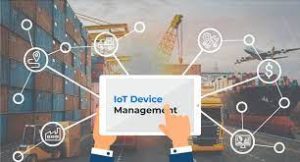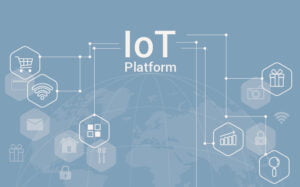IoT device management is the backbone of every scalable and secure IoT deployment. From smart cities to industrial automation, businesses need reliable tools to provision, monitor, update, and control thousands of connected devices remotely. In this guide, you’ll learn the core features, best platforms (AWS, Azure, Google Cloud), real-world use cases, and expert best practices to optimize your device operations in 2025.
Core Features of IoT Device Management
Provisioning and Authentication
Provisioning is the initial setup process where devices are registered and configured to join the network. This involves setting up device credentials and ensuring they can securely connect to the IoT platform. Authentication ensures that only authorized devices can access the network, protecting against unauthorized access and potential security breaches. This is typically achieved through methods such as digital certificates, tokens, or keys that verify the identity of devices.
Configuration and Control
Configuration and control are crucial for managing device settings and behavior remotely. This includes updating firmware, changing configurations, and setting operational parameters. Remote configuration management allows administrators to push updates and changes without needing physical access to the devices, saving time and reducing operational costs. Effective configuration management ensures devices operate optimally and can adapt to changing requirements and conditions.
Monitoring and Diagnostics
Monitoring involves real-time tracking of device performance, health, and status. IoT Device Management platforms provide dashboards and tools to visualize data from devices, set alerts for specific conditions, and monitor key performance indicators. Diagnostics tools help in identifying and troubleshooting issues, accessing logs, and performing root cause analysis. Real-time monitoring and diagnostics are essential for maintaining device reliability and performance, ensuring quick resolution of problems and minimizing downtime.
Maintenance and Updates
Regular maintenance and updates are vital for ensuring the ongoing security and functionality of IoT devices. This includes deploying firmware updates, patches, and security enhancements. Automated update mechanisms can schedule and deploy updates across multiple devices, ensuring they are always running the latest and most secure versions of software. Maintenance also involves routine checks and preventive measures to keep devices in good working condition and extend their lifespan.
End-of-Life Management
End-of-life management involves the secure decommissioning of IoT devices that are no longer in use. This includes securely wiping data, removing device credentials, and disposing of hardware responsibly. Proper end-of-life management prevents unauthorized access to data from retired devices and ensures compliance with data protection regulations. It also involves recycling or disposing of electronic components in an environmentally friendly manner.
Benefits of IoT Device Management
Enhanced Security
IoT Device Management significantly enhances security by ensuring that only authorized devices can access the network and that all communications are encrypted. Regular updates and patches help protect devices from vulnerabilities and cyber threats. Monitoring tools can detect and respond to suspicious activities in real-time, providing an additional layer of security.
Improved Operational Efficiency
By automating routine tasks such as updates, configuration changes, and monitoring, IoT Device Management reduces the workload on IT and operations teams. This leads to improved operational efficiency, allowing teams to focus on more strategic initiatives. Automated processes also reduce the risk of human error, ensuring consistent and reliable device management.
Scalability and Flexibility
IoT Device Management platforms are designed to handle large-scale deployments, making it easier to manage thousands or even millions of devices. These platforms offer flexible deployment options, whether on-premises, in the cloud, or hybrid environments, allowing organizations to scale their IoT operations as needed. This flexibility is crucial for businesses looking to expand their IoT footprint without being constrained by infrastructure limitations.
Cost Reduction
Effective IoT Device Management can lead to significant cost savings by reducing the need for manual interventions, minimizing downtime, and extending the lifespan of devices. Automated maintenance and updates prevent costly failures and improve the overall reliability of the IoT network. Additionally, remote management capabilities reduce the need for on-site visits, saving on travel and labor costs.
Challenges in IoT Device Management
Data Security and Privacy
One of the primary challenges in IoT Device Management is ensuring data security and privacy. IoT devices often handle sensitive data, making them attractive targets for cybercriminals. Protecting data in transit and at rest using encryption and secure communication protocols is essential. Implementing strong access controls and regularly updating security measures are crucial to safeguarding data privacy.
Network Performance and Reliability
Managing a large number of IoT devices can strain network resources, leading to bandwidth issues, congestion, and potential outages. Ensuring reliable connectivity and network performance is a critical challenge, especially in environments with limited or variable network coverage. Optimizing network configurations and using advanced monitoring tools can help maintain performance and reliability.
Handling Scale and Complexity
As IoT deployments grow, managing the scale and complexity of device networks becomes increasingly challenging. Different devices may have varying requirements, configurations, and communication protocols, adding to the complexity. IoT Device Management platforms must be capable of handling diverse device types and large-scale deployments efficiently.
Regular Firmware and Software Updates
Keeping IoT devices up to date with the latest firmware and software is essential for maintaining security and functionality. However, deploying updates across a large fleet of devices can be logistically challenging. Automated update mechanisms and robust version control are necessary to ensure that updates are applied consistently and without disruption.
Common Problems Addressed by IoT Device Management
Data Security
IoT Device Management addresses data security by implementing robust authentication methods, encryption, and secure communication protocols. Regular security updates and patches help mitigate vulnerabilities and protect against cyber threats.
Device Proliferation
Managing a large number of IoT devices efficiently is a common challenge. IoT Device Management platforms provide tools for bulk provisioning, configuration, and updates, streamlining the management process and reducing the administrative burden.
Fragmented Data
IoT devices generate vast amounts of data, often in diverse formats and structures. IoT Device Management platforms help organize, analyze, and integrate this data, enabling businesses to derive actionable insights and make informed decisions.
Common Problems Addressed by IoT Device Management (Continued)
Data Security
IoT devices often handle sensitive information, making them prime targets for cyber-attacks. By implementing strong encryption and secure communication protocols, IoT Device Management ensures data integrity and confidentiality. Regular security updates and patches are deployed to address vulnerabilities, and strong access control measures are put in place to prevent unauthorized access.
Device Proliferation
The exponential growth of IoT devices can lead to challenges in management and maintenance. IoT Device Management platforms streamline this process by providing bulk provisioning, automated configuration, and centralized monitoring, making it easier to manage large numbers of devices. This reduces the administrative burden and enhances operational efficiency.
Fragmented Data
IoT ecosystems generate vast amounts of data from diverse sources, often in different formats. IoT Device Management platforms help to standardize data collection, organize it effectively, and facilitate its analysis. This integration is crucial for deriving actionable insights and making data-driven decisions that can improve business operations.
Remote Management of IoT Devices
Remote management of IoT devices enables businesses to monitor, control, and update connected devices from anywhere via cloud-based platforms. This capability is especially crucial when devices are deployed in hard-to-reach or widely distributed locations—such as industrial machines, smart meters, agricultural sensors, or remote healthcare equipment.
Why Remote Management Matters
- Minimize Downtime: Issues can be detected and resolved without on-site visits, saving time and maintenance costs.
- Over-the-Air Updates (OTA): Firmware and software can be updated remotely to improve performance, fix bugs, or patch security vulnerabilities.
- Scalability: Centralized dashboards allow teams to manage thousands of devices efficiently.
- Data Monitoring: Real-time status tracking helps ensure devices are functioning properly and within expected parameters.
Common Challenges in Remote IoT Device Management
- Network Reliability: Devices in remote or mobile environments may face inconsistent connectivity.
- Security Risks: Unsecured remote access can open devices to cyber threats or unauthorized control.
- Device Diversity: Managing different hardware types, protocols, and operating systems requires flexible and interoperable solutions.
- Latency & Response Time: Mission-critical applications (e.g. in industrial automation or healthcare) need real-time responsiveness.
Top Remote IoT Device Management Platforms
AWS IoT Device Management
AWS IoT Device Management is a comprehensive solution that provides secure, scalable, and efficient management of IoT devices. Key features include:
- Secure Onboarding: Simplifies the process of securely onboarding devices to the IoT network.
- Fleet Indexing: Helps in organizing and searching for devices based on various attributes.
- Secure Tunneling: Allows secure remote access to devices for troubleshooting and maintenance.
- Jobs: Automates tasks such as firmware updates, patches, and configuration changes across large device fleets.
AWS IoT Device Management is used across various industries, from smart homes and industrial IoT to healthcare and smart cities, due to its robust and scalable features.
Azure IoT Hub
Azure IoT Hub is another leading platform that offers comprehensive IoT device management capabilities. Key features include:
- Device Twin: Represents the state of a device, allowing for easy synchronization and management.
- Direct Methods: Enables synchronous communication with devices for immediate updates and commands.
- Device Provisioning Service: Automates device provisioning at scale with zero-touch provisioning capabilities.
- Security Enhancements: Provides secure communication channels, authentication, and compliance with regulatory standards.
Azure IoT Hub supports a wide range of use cases, including remote monitoring, predictive maintenance, and real-time analytics, making it a versatile choice for IoT deployments.
Google Cloud IoT Core
Google Cloud IoT Core offers a fully managed service for securely connecting, managing, and ingesting data from globally dispersed devices. Key features include:
- Device Manager: Simplifies device configuration and management.
- Data Ingestion: Seamlessly integrates with other Google Cloud services for data processing and analytics.
- Secure Communication: Ensures secure device communication through TLS encryption.
- Edge Computing: Supports edge computing to process data locally and reduce latency.
Google Cloud IoT Core is ideal for applications requiring real-time data analysis and robust security, such as smart cities, industrial automation, and logistics.
KaaIoT
KaaIoT is an open-source IoT platform that provides flexible deployment options and comprehensive management features. Key features include:
- Device Lifecycle Management: Covers all stages from provisioning to decommissioning.
- Data Collection and Analytics: Offers powerful tools for collecting, analyzing, and visualizing IoT data.
- Remote Control and Monitoring: Enables real-time device monitoring and control.
- Customizable Solutions: Allows for extensive customization to meet specific business needs.
KaaIoT's flexibility and extensive feature set make it suitable for diverse IoT applications, including smart homes, industrial IoT, and healthcare.
How to Choose the Right IoT Device Management Platform
Choosing the right IoT device management platform is critical to ensuring your connected infrastructure is secure, scalable, and future-proof. Whether you’re deploying smart meters, industrial sensors, or healthcare devices, here are the key factors to evaluate:
1. Security & Compliance
- Does the platform support secure onboarding and authentication?
- Are communications encrypted (TLS, DTLS)?
- Can it enforce policies for firmware updates, access control, and device isolation?
- Is the platform compliant with standards like ISO 27001, HIPAA, or GDPR?
Why it matters: Security is the foundation of any IoT deployment—vulnerable devices can compromise your entire network.
2. Scalability & Performance
- Can the platform handle thousands or millions of devices?
- How well does it perform under load (e.g., concurrent firmware updates)?
- Does it support edge computing or hybrid deployments?
Why it matters: As your device fleet grows, your management platform must scale seamlessly without sacrificing speed or reliability.
3. Cross-Protocol and Cross-Brand Support
- Is the platform compatible with MQTT, CoAP, HTTP, LwM2M, and proprietary protocols?
- Can it integrate with heterogeneous hardware from multiple vendors?
Why it matters: Real-world deployments involve a mix of device types. Flexible protocol support prevents vendor lock-in and future rework.
4. Diagnostics & Real-Time Monitoring
- Does the platform offer visual dashboards, alerting, and health monitoring?
- Can it support over-the-air (OTA) updates, remote logging, and automated diagnostics?
Why it matters: You need real-time insights into device behavior to catch failures before they cascade.
Best Practices in IoT Device Management
Implementing Strong Security Measures
Security is paramount in IoT Device Management. Implementing multi-factor authentication, data encryption, and secure communication protocols are critical steps. Regular security audits and compliance checks help ensure ongoing protection against emerging threats.
Ensuring Regular Updates and Maintenance
Keeping devices updated with the latest firmware and software patches is essential for maintaining security and performance. Automated update mechanisms should be in place to ensure timely and consistent updates across all devices.
Real-time Monitoring and Alerts
Real-time monitoring and alerting systems are vital for detecting and responding to issues promptly. Setting up alerts for specific conditions, such as device malfunctions or security breaches, helps in quick resolution and minimizes downtime.
Efficient Configuration and Control Mechanisms
Streamlining remote configuration and control mechanisms enhances operational efficiency. Using centralized management tools to push updates, change settings, and monitor device status can significantly reduce the complexity and time required for device management.
Real-World Use Cases & Examples of IoT Device Management
Smart Homes
IoT Device Management in smart homes involves controlling and troubleshooting devices such as thermostats, security cameras, and smart appliances. It enables homeowners to remotely monitor and manage their devices, ensuring they operate efficiently and securely. For instance, users can receive alerts for unusual activity, update device settings, and perform remote diagnostics, all from a centralized platform. This enhances convenience, security, and energy efficiency in smart homes.
Industrial IoT
In industrial settings, IoT Device Management is crucial for monitoring and maintaining equipment such as machinery, sensors, and robots. By implementing IoT Device Management, industries can perform predictive maintenance, reducing downtime and improving operational efficiency. Real-time monitoring and diagnostics allow for quick identification and resolution of issues, ensuring continuous production flow. This application is particularly beneficial in manufacturing, logistics, and supply chain management, where operational efficiency is paramount.
Healthcare
Healthcare providers use IoT Device Management to track medical devices and monitor patient health. This involves managing devices such as wearable health monitors, infusion pumps, and remote patient monitoring systems. IoT Device Management ensures these devices are updated, secure, and functioning correctly, providing reliable health data to caregivers. This enhances patient care, improves health outcomes, and allows for remote health monitoring, which is especially valuable in managing chronic conditions and during pandemics.
Smart Cities
In smart cities, IoT Device Management helps manage infrastructure such as streetlights, traffic systems, and environmental sensors. City officials can remotely monitor and control these devices to ensure efficient operation and reduce maintenance costs. For example, smart streetlights can be adjusted based on real-time conditions, and traffic systems can be optimized to reduce congestion. This leads to improved urban living conditions, enhanced public safety, and more efficient resource use.
Final Thoughts
IoT Device Management is a critical component of the modern connected ecosystem. It encompasses the entire lifecycle of IoT devices, from provisioning and configuration to monitoring, maintenance, and decommissioning. By implementing effective IoT Device Management practices, organizations can enhance security, improve operational efficiency, and scale their IoT deployments seamlessly. The benefits extend across various industries, including smart homes, industrial IoT, healthcare, and smart cities, driving innovation and efficiency.
As IoT continues to evolve, the importance of robust device management will only increase. Future advancements in IoT Device Management will likely focus on enhancing security, automating processes, and leveraging AI and machine learning for predictive analytics. By staying ahead of these trends, organizations can ensure their IoT deployments remain secure, efficient, and capable of delivering valuable insights.
FAQs About IoT Device Management
Q1: What is IoT device management?
A: It's the process of provisioning, monitoring, updating, and securing connected IoT devices across a network.
Q2: What are the core features of an IoT device management system?
A: Device provisioning, remote configuration, firmware updates, monitoring, and security management.
Q3: How does remote management work in IoT?
A: It allows centralized control via cloud platforms using protocols like MQTT or CoAP to send updates and receive data.
Q4: Which platforms are best for managing IoT devices?
A: AWS IoT Core, Balena, Particle, and ThingsBoard are widely used platforms for remote IoT device control.
Q5: Can I manage devices from different brands and protocols?
A: Yes, modern platforms support cross-protocol and cross-brand integration using standardized APIs or edge gateways.
References
- Software AG on IoT Device Management
- AWS IoT Device Management
- KaaIoT Blog on Device Management
- IEEE Article on IoT Device Management
Need a Custom IoT Device Management Solution?
At ZedIoT, we help businesses build tailored solutions for scalable, secure, and intelligent device management. Whether you're looking to create a custom IoT device platform, enable real-time device monitoring, or deploy devices faster with our IoT Device Rapid Cloud service, we’ve got you covered.
Our team specializes in:
✅ IoT device platform development with full control over security, scalability, and data integration
✅ Continuous IoT device monitoring to ensure optimal performance and proactive maintenance
✅ Rapid cloud onboarding and provisioning with our IoT Device Rapid Cloud approach
✅ Seamless remote management of IoT devices across industrial, medical, and smart environments
Let’s turn your IoT vision into a scalable reality.
???? Contact us to discuss your device management needs.


